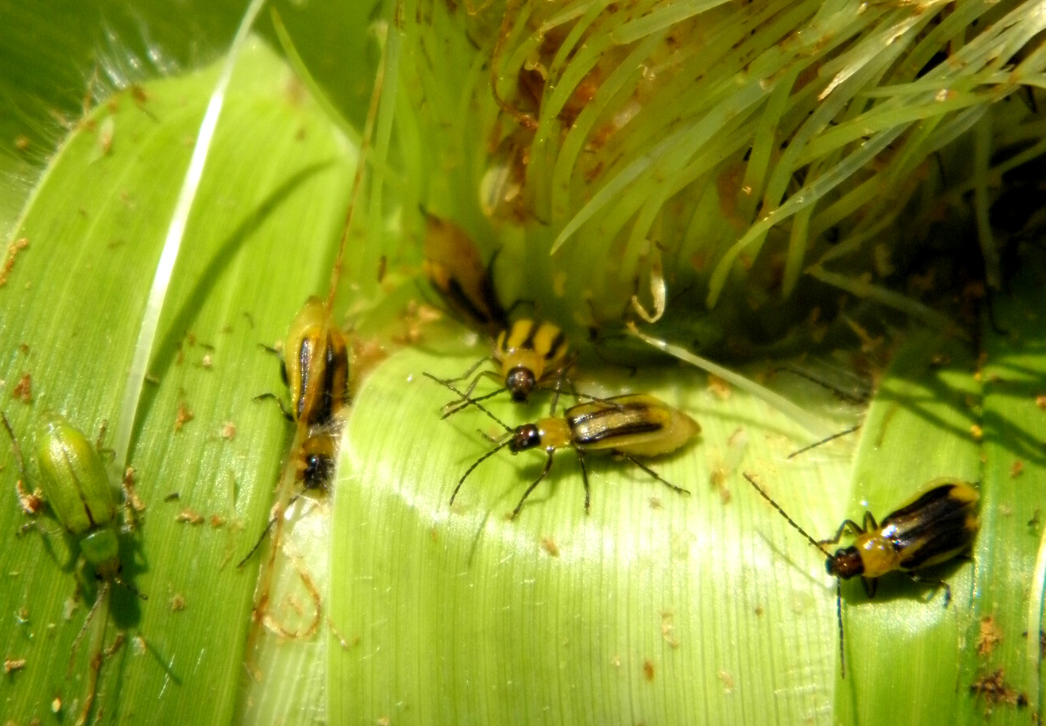|
|
Scattered showers and thunderstorms August 6-7 interrupted a predominantly dry weather pattern in Wisconsin. Weekend storms delivered much-needed precipitation across the state, with the highest totals of 2-4 inches recorded along a corridor from Wisconsin Rapids to Green Bay. The rain reduced stress on summer crops after a July drying trend, and the majority of the state’s corn and soybean acres continue to fare well. Approximately three-quarters of the state’s corn (76%) and soybeans (74%) were rated in good to excellent condition as of August 8, despite decreases of 1-3 percentage points from the previous week. Crop development remains about a week behind last year and 2-3 days behind the five-year average, with 77 percent of the state’s corn acreage at or beyond the silking stage and 57 percent of soybeans setting pods. Insect development is also approximately a week behind average this season. Corn rootworm beetle populations are likely to peak later in August, which suggests egg laying will continue well into September.
__________________________________
  Corn rootworm beetles | K. Hamilton DATCP
 
|
|
DATCP’s annual corn rootworm beetle survey is now in progress. Counts in the 84 grain corn fields sampled as of August 11 have been variable, with 42 fields (50%) averaging low counts of 0.0-0.4 beetles per plant and 13 sites (15%) having moderate beetle counts in the range of 0.5-0.7 per plant. Above-threshold averages of 0.75 or more beetles per plant have been observed at 29 (35%) of the sites so far, including very high counts of 3.0-7.2 beetles per plant recorded in Dane, Sauk, and Trempealeau counties.
Corn producers should be aware of the potential for corn rootworm adults to redistribute from earlier silking fields to later-planted fields as beetle emergence continues. Now is the time to scout to determine this season’s beetle pressure and forecast the risk of larval root injury to continuous corn in 2023. DATCP’s survey includes 229 cornfields and is scheduled to be complete by the end of the month. |
|
 __________________________________
|
|
|
Western bean cutworm larva | K. Hamilton DATCP
 
|
|
Counts of western bean cutworm moths have declined markedly as the flight period ends. All but five of DATCP’s 36 monitoring locations reported a drop in counts this week, the exceptions being sites in central and far northern Wisconsin. The network’s total weekly capture of 398 moths is a sharp decrease from 1,154 last week and 1,956 the week before, when the flight peaked at most sites (July 22-28). The current state cumulative total is 4,453 moths in 36 traps or an average of 124 per trap.
This season’s large flight is expected to produce localized heavy larval populations in the central areas of the state with a history of higher western bean cutworm pressure. Early and intermediate-stage larvae were observed this week during surveys in Adams, La Crosse, Richland, and Trempealeau counties. |
|
 __________________________________
|
|
|
|